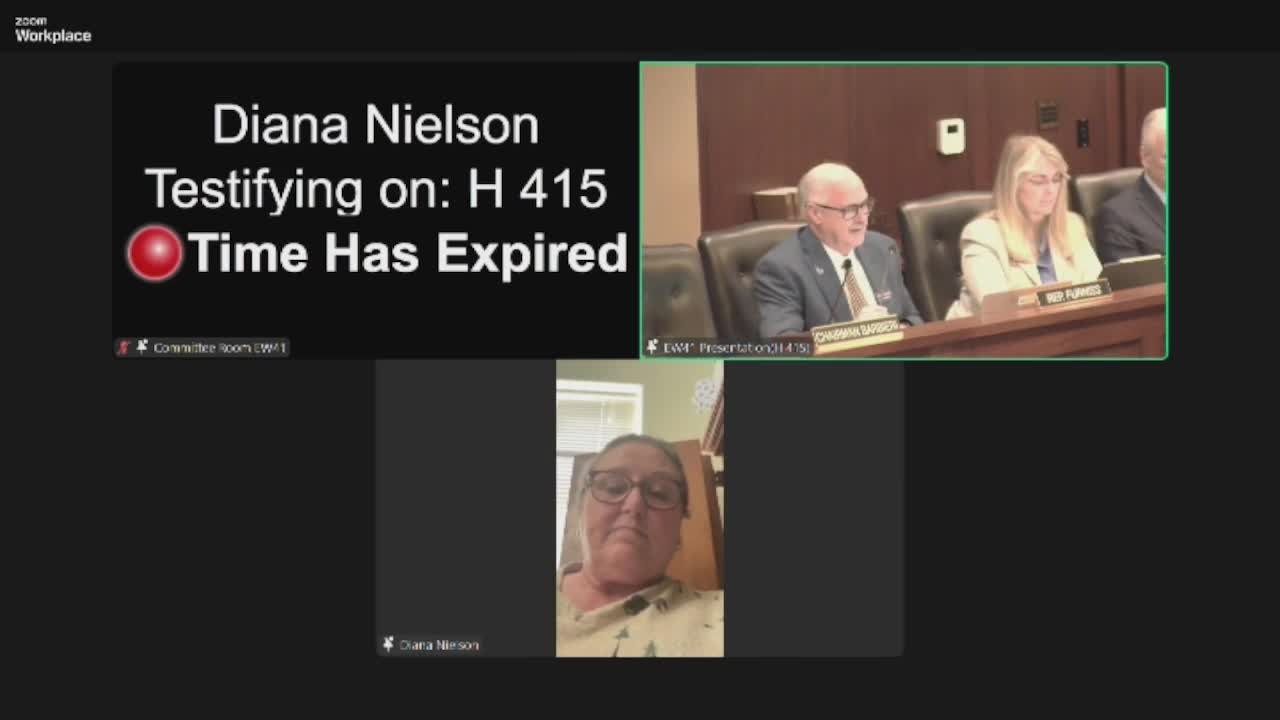Idaho's House Bill 415 sparks debate over energy project regulations
March 20, 2025 | 2025 Legislative Sessions, Idaho
This article was created by AI summarizing key points discussed. AI makes mistakes, so for full details and context, please refer to the video of the full meeting. Please report any errors so we can fix them. Report an error »

Concerns over House Bill 415 dominated the recent Idaho Legislature's House Standing Committee on Environment, Energy & Technology meeting, as stakeholders voiced their apprehensions about its potential impact on energy regulation and inter-state cooperation.
Miss Nielsen, a vocal advocate, highlighted her ongoing complaints to the Public Utilities Commission (PUC) regarding previous rate hikes and significant federal funding proposals, including a staggering $300 million earmarked for the swift line project. She emphasized the importance of these discussions, stating, "This is big, big money," and underscored the implications of a collaborative environmental impact statement involving Idaho, Washington, Oregon, and six other western states for solar energy projects.
In a shift of focus, Ryan McGoldrick from Conservation Voters of Idaho raised critical points about House Bill 415, particularly its regulatory framework. He warned that the bill could leave various energy projects unregulated by the Idaho PUC, regardless of ownership. McGoldrick also pointed out that the legislation could hinder interconnections with neighboring states, specifically mentioning the California Independent System Operator (CAISO) and the Mid Continent ISO (MISO), which includes parts of Montana.
He further noted that while the bill includes exceptions for investor-owned utilities and cooperatives, it lacks similar provisions for municipal-owned utilities. This omission could pose challenges for projects like a major nuclear facility in Eastern Idaho, which would require agreements beyond state lines to function effectively.
As discussions continue, the implications of House Bill 415 remain a focal point for Idaho's energy future, with stakeholders urging careful consideration of its broader impacts on regulation and inter-state energy collaboration. The committee's next steps will be crucial in determining the bill's fate and its potential effects on Idaho's energy landscape.
Miss Nielsen, a vocal advocate, highlighted her ongoing complaints to the Public Utilities Commission (PUC) regarding previous rate hikes and significant federal funding proposals, including a staggering $300 million earmarked for the swift line project. She emphasized the importance of these discussions, stating, "This is big, big money," and underscored the implications of a collaborative environmental impact statement involving Idaho, Washington, Oregon, and six other western states for solar energy projects.
In a shift of focus, Ryan McGoldrick from Conservation Voters of Idaho raised critical points about House Bill 415, particularly its regulatory framework. He warned that the bill could leave various energy projects unregulated by the Idaho PUC, regardless of ownership. McGoldrick also pointed out that the legislation could hinder interconnections with neighboring states, specifically mentioning the California Independent System Operator (CAISO) and the Mid Continent ISO (MISO), which includes parts of Montana.
He further noted that while the bill includes exceptions for investor-owned utilities and cooperatives, it lacks similar provisions for municipal-owned utilities. This omission could pose challenges for projects like a major nuclear facility in Eastern Idaho, which would require agreements beyond state lines to function effectively.
As discussions continue, the implications of House Bill 415 remain a focal point for Idaho's energy future, with stakeholders urging careful consideration of its broader impacts on regulation and inter-state energy collaboration. The committee's next steps will be crucial in determining the bill's fate and its potential effects on Idaho's energy landscape.
View full meeting
This article is based on a recent meeting—watch the full video and explore the complete transcript for deeper insights into the discussion.
View full meeting